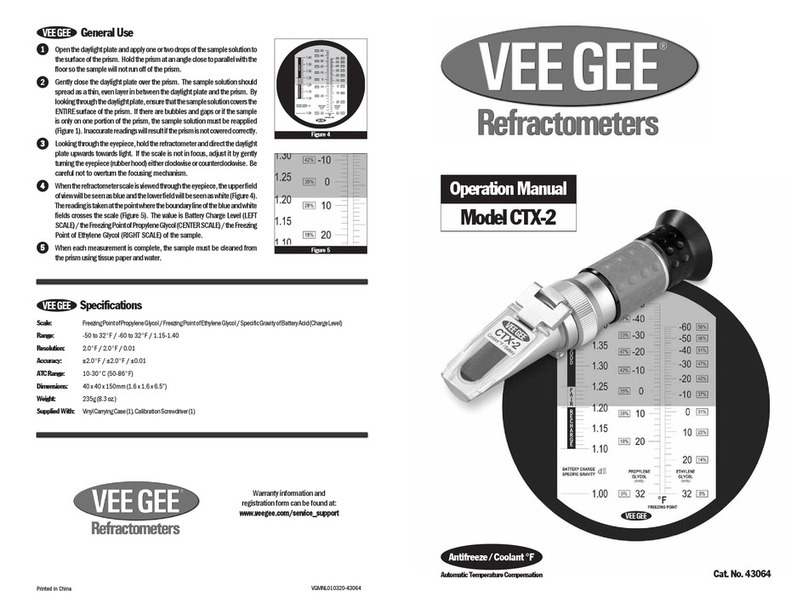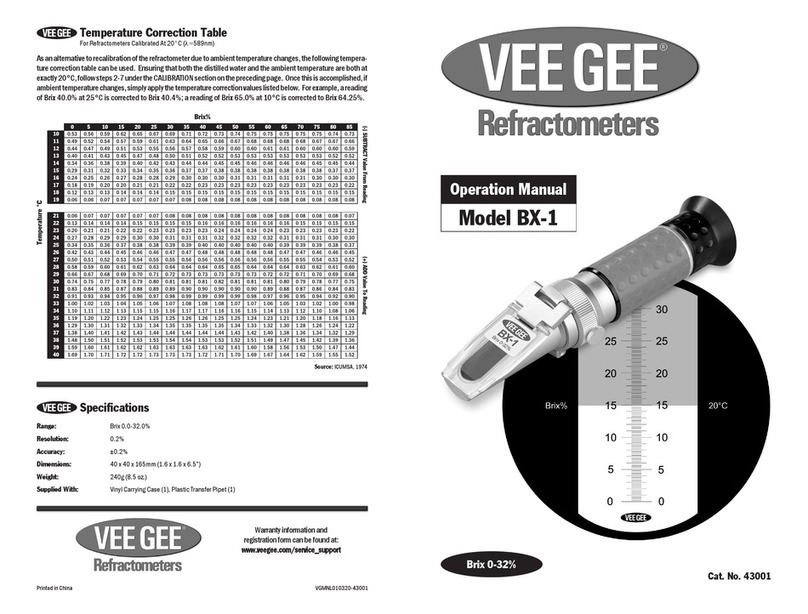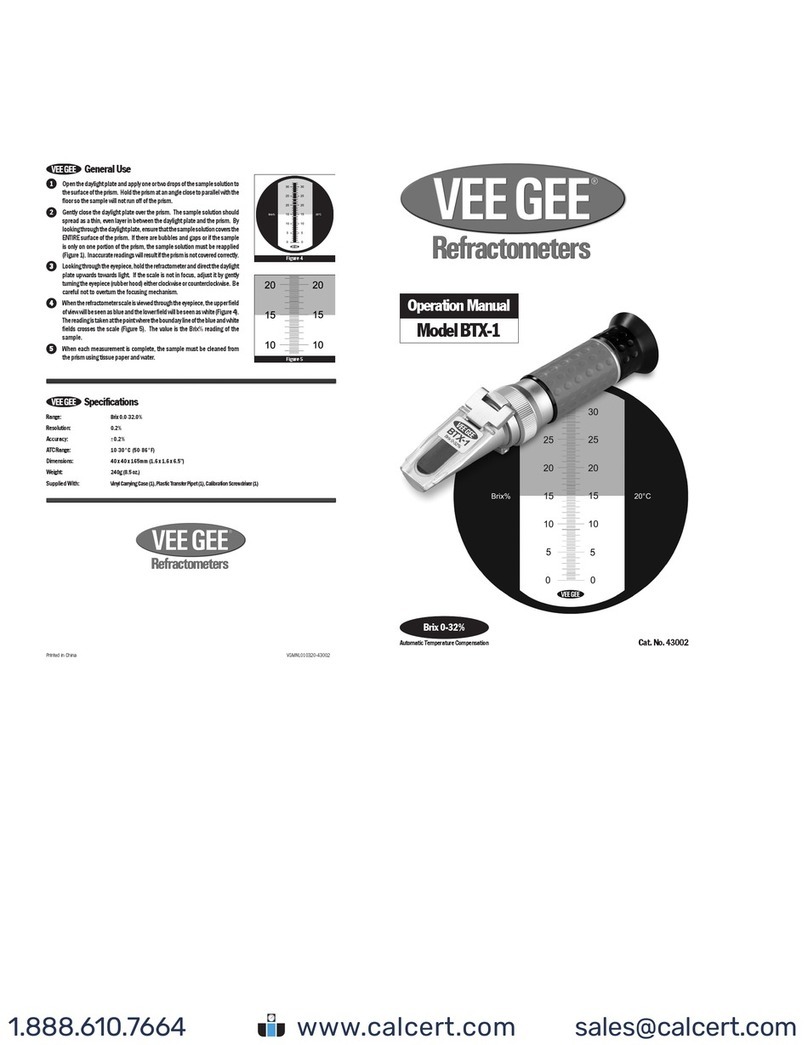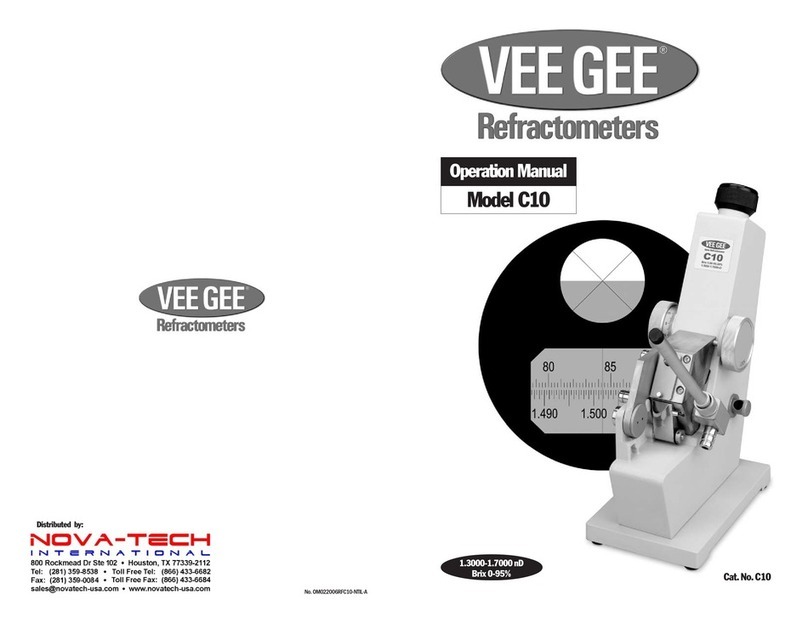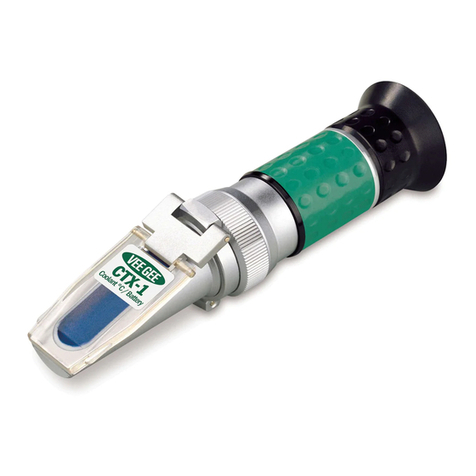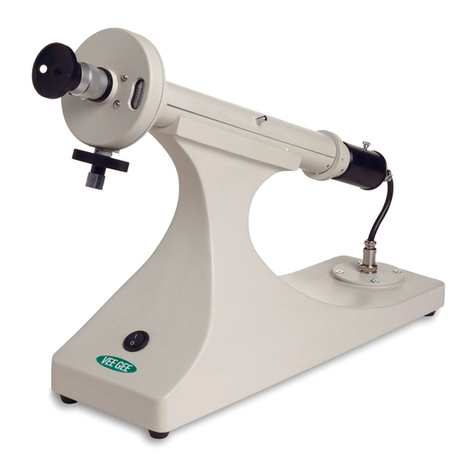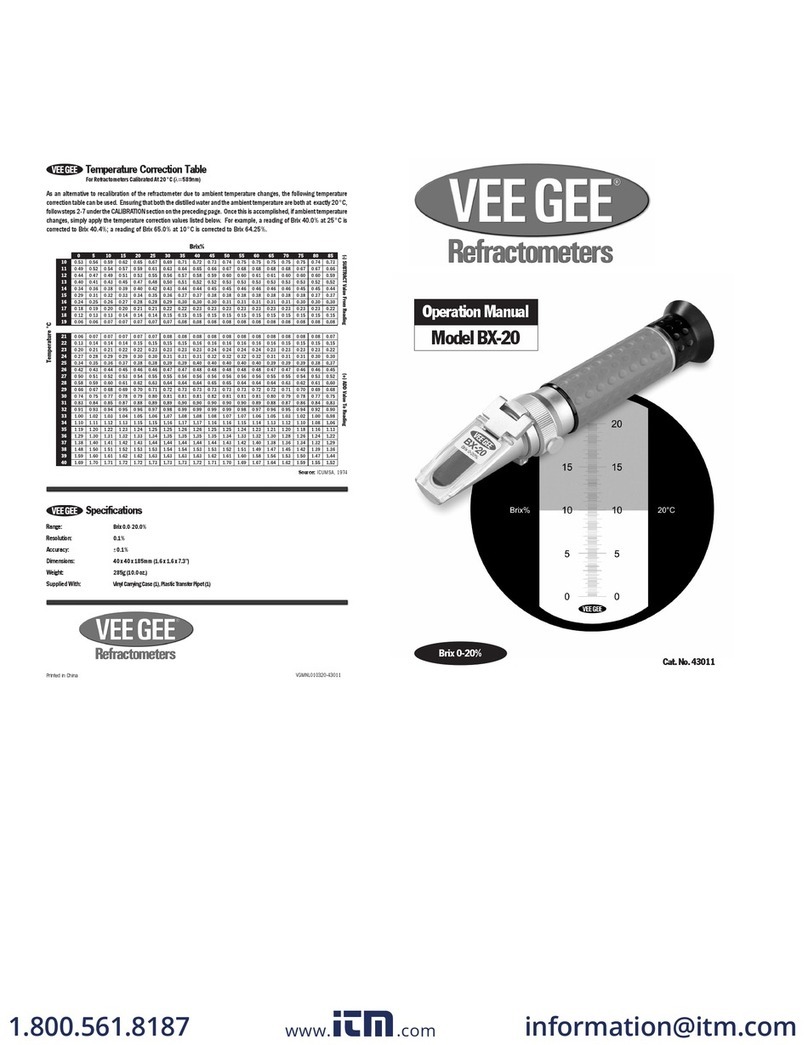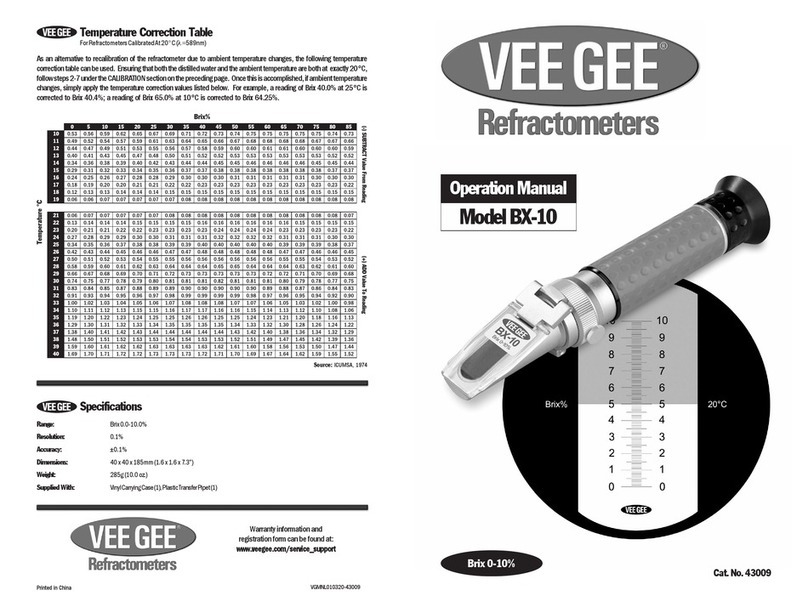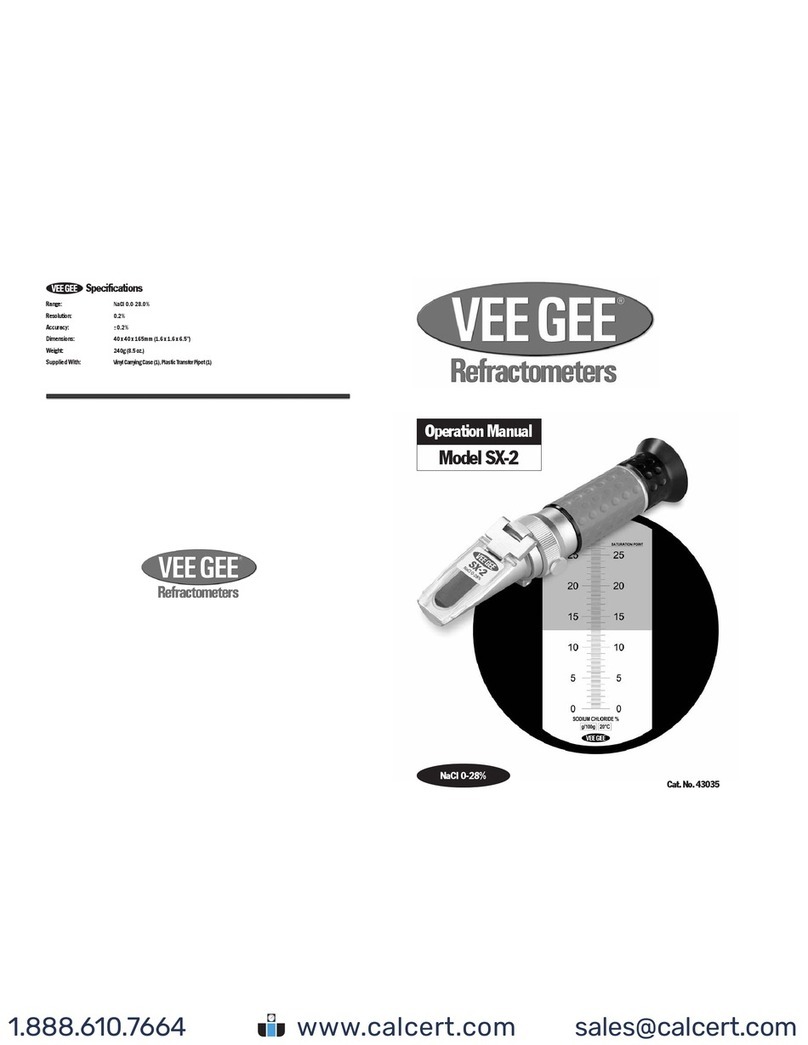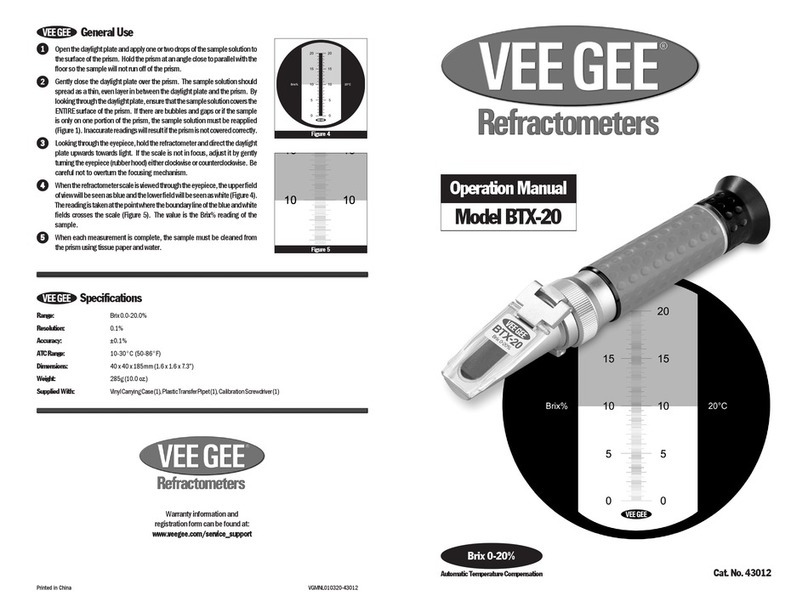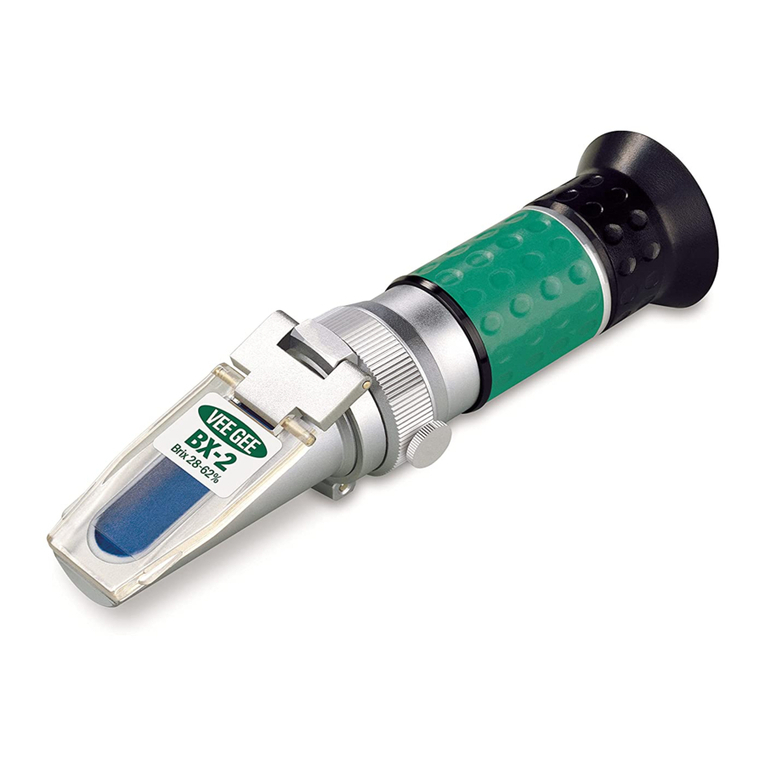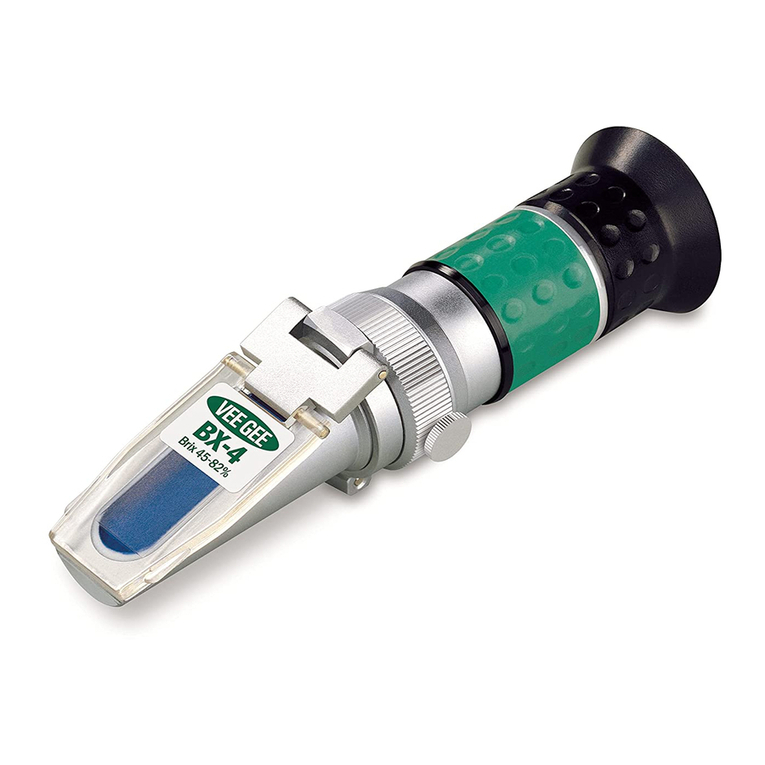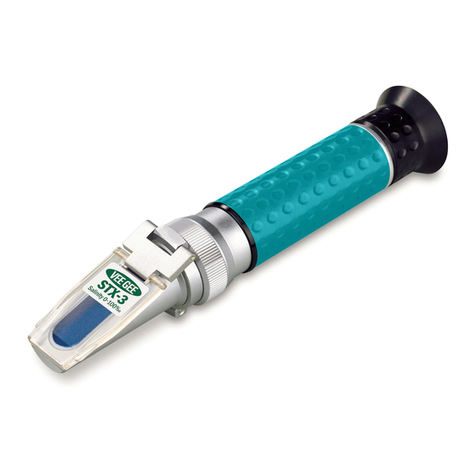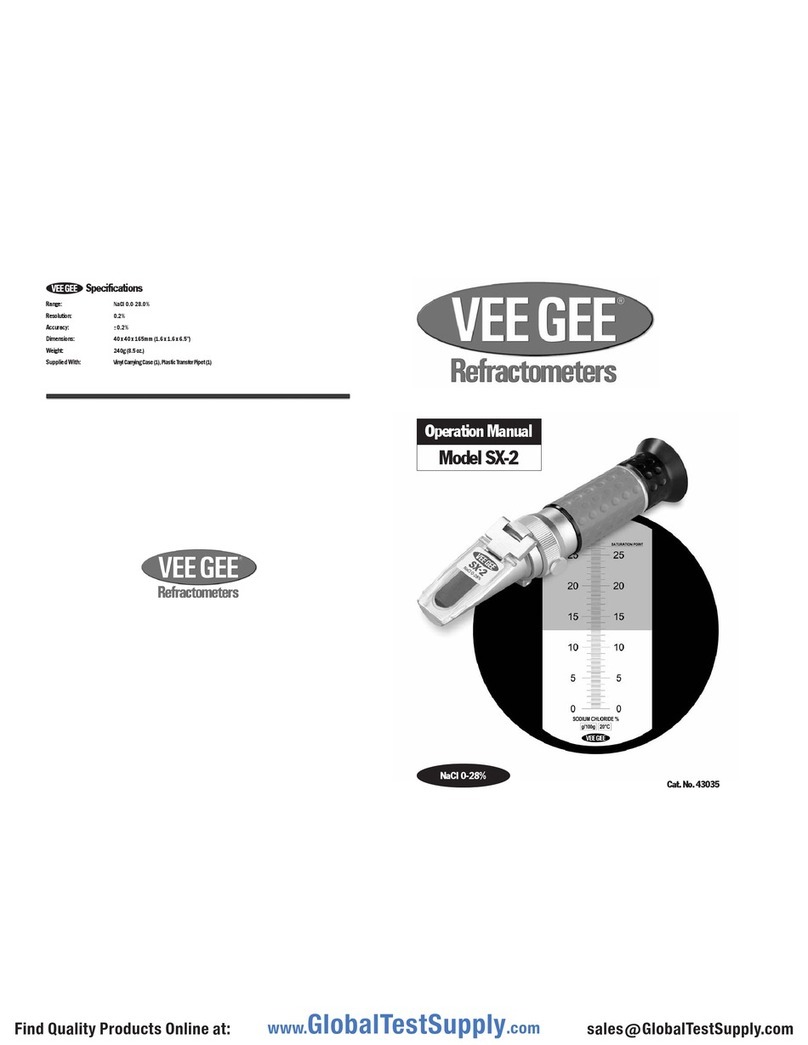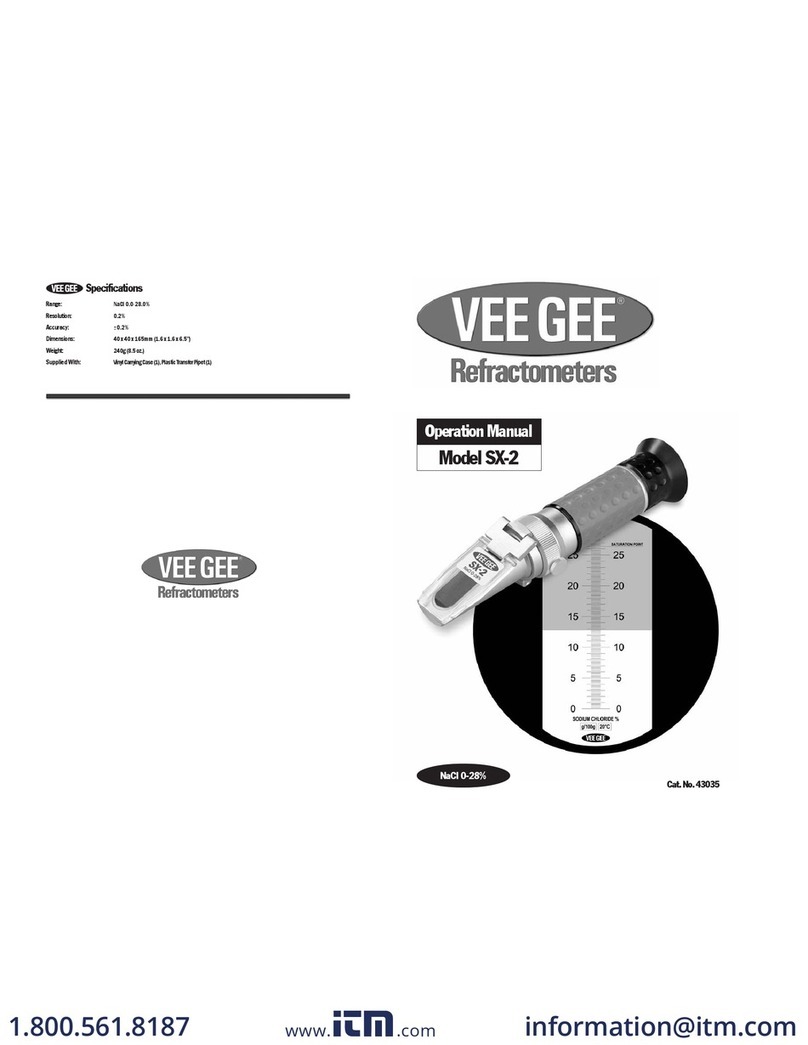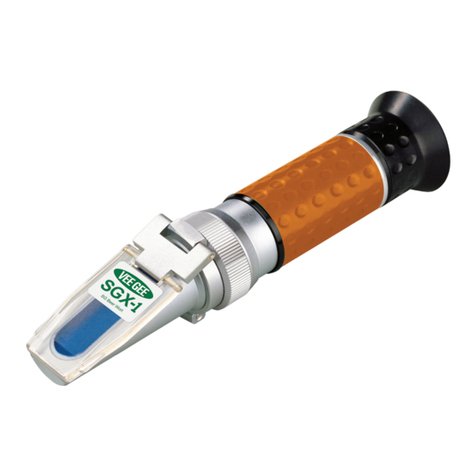
Refractometer Components
Secondary Prism
Coverstheprimary prismand sampleduring readings.
Eyepiece
Theeyepiece is focusableto ensuresharp, accurate
readings.
Dispersion Dial
Eliminates color/blurriness from the
boundaryline.
Thermometer
Displaysthecurrenttemperatureofthesample/
prismassembly.
Primary Prism
Theprimary prism andsample are covered
by the secondary prism during readings.
This refractometer is an optical instrument -- it can become damaged if dropped or handled in a rough manner.
Theprismis made of optical glass and is susceptible to scratches--donotapplyanyroughor abrasive material and take
care when cleaning the prism.
After each use, clean the prism surface and daylight plate with a soft cloth or tissue soaked in water and wipe off with
a dry cloth or tissue.
Do not hold the refractometer under a stream of water from a faucet. Do not splash it with or dip it in water.
If the surface of the prism becomes coated with an oily solution or similar, it will repel test samples and affect readings.
If this occurs, the prism should be cleaned with a weakened detergent or similar solvent.
2 3
Precautions
Thank you for purchasing this VEE GEE Refractometer. With the user in mind, VEE GEE Refractometers are built from modern
designs and, with proper care, this instrument should provide many years of reliable performance. It’s recommended this
manual is read entirely before using the refratometer for the first time.
Introduction
1
2
5
4
3
General Use
Open the secondary prism and apply one or two drops of the sample solution
to the surface of the primary prism. Hold the refractometer at an angle close to
parallel with the floor so the sample will not run off of the prism.
Gently close the secondary prism over the primary prism. The sample solution
should spread as a thin, even layer in between the seconary prism and the
primary prism. If there are bubbles and gaps or if the sample is only on one
portion ofthe prism, thesample solution mustbe reapplied (Figure 1). Inaccurate
readings will result if the prism is not covered correctly.
Before performing a reading, the range selection dial must be set to the range
which covers the approximate value of the sample solution. Choose from the
following:
RANGE No. 1:
1.3330-1.4050nD
(RIGHT)
RANGE No. 2:
1.4050-1.4670nD
(CENTER)
RANGE No. 3:
1.4680-1.5170nD
(LEFT)
If an approximate value of the sample is unknown, cycle through the three ranges
and select the range which provides the sharpest contrast at the boundary line.
Looking through the eyepiece, hold the refractometer (secondary prism facing
up) and direct the prism assembly upwards towards light. If the scale is not in
focus,adjust it bygentlyturning the eyepiece eitherclockwise or counterclockwise.
Be careful not to overturn the focusing mechanism.
In the field of view, the boundary line may appear colored and/or blurry (Figures
2& 3). If this isthe case, turn thedispersiondial until the coloringandor blurriness
is replaced by sharp contrast.
When the refractometer scale is viewed through the eyepiece (with the dispersion
dial at the proper setting), the upper field of view will be seen as grey and the lower
field will be seen as white (Figure 4). The reading is taken at the point where the
boundary line of the grey and white fields crosses the scale (Figure 5). The value
is the Refractive Index (nD) reading of the sample.
When each measurement is complete, the sample must be cleaned from the
prism using tissue paper and water.
This refractometer is equipped with a thermometer indicating the temperature of
the sample/prism assembly. These temperature readings are used to calculate
temperature correction values when readings are conducted in ambient
temperatures above or below 20°C. Please refer to the follwoing page for
temperature correction procedures.
Range Selection Dial
Setstheoptics toone ofthe3 availablescales.
Figure 1
Figure 2
Figure 3
Figure 4
Figure 3
Figure 5
Figure 3
6
7
8
9
